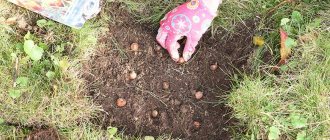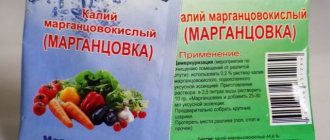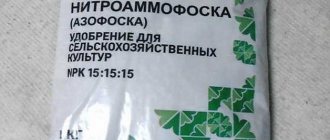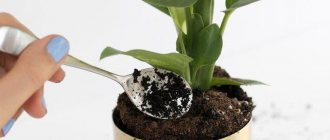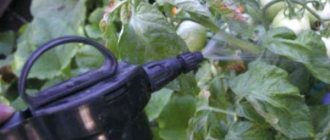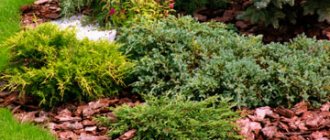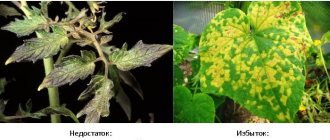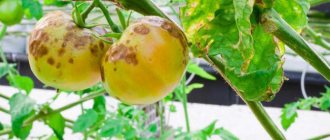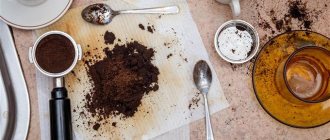To grow a crop of vegetables, fruits and berries, gardeners use various substances to stimulate growth, flowering and fruiting. Boric acid is one of them. In addition to being a fertilizer, the substance can also serve as a protective agent against pests. Let's consider the use of boric acid in the garden for vegetables, grapes, trees and fruit bushes.
Why do plants need boric acid?
As the name suggests, boric acid provides boron to crops. This microelement is needed for normal metabolism in plant tissues, both in the above-ground and underground parts.
The drug acts as a stimulant during flowering, which leads to accelerated formation of ovaries and fruits. Boron also strengthens the immune system of plants, which allows them to be more resistant to drought and disease.
In addition, boric acid has a positive effect on the taste of fruits.
Boric acid for ants - recipes
Boric acid is an excellent remedy for annoying ants.
Below are recipes for boric acid poison against ants that will help eliminate ants in a short time:
- Grind 1/2 teaspoon of acid and a couple of egg yolks. From the resulting mass you need to make balls (no larger than a pea) and distribute them along the paths that the ants walk.
- Boil the potatoes, without removing the skins, and 3 egg yolks. Add a teaspoon of sugar, boric acid in the amount of 10 g, then mix well. As in the first case - make balls and place them in places where ants accumulate.
- Connect 2 tbsp. spoons of glycerin, tbsp. water, 1.5 tbsp. sugar, a third of boric acid and a teaspoon of honey. Make balls.
These 3 recipes are quite enough to eliminate “uninvited guests”.
How to prepare boric acid bait for ants - video
When can you feed plants with boric acid?
The addition of a microelement such as boron to the diet is carried out several (usually 3) times throughout the summer season. For the first time in the budding phase. Once again at the stage of formation of the ovaries of future fruits. It is most effective to carry out foliar treatments on the leaf.
ON A NOTE. Apple and pear trees require at least three treatments with a powder solution: at the pink bud stage, at the beginning of flowering, and also at the beginning of fruiting.
As a liquid root fertilizer, the powder is used at almost all stages of plant growth from budding to fruiting. But be careful, since root feeding is carried out once a season.
IMPORTANT! The drug should also be used when signs of microelement deficiency appear.
Reader Questions
Beginning gardeners and gardeners always have questions.
How to dilute boric acid for processing cucumbers?
To completely dissolve the acid crystals, use only hot water. Otherwise, the crystals will simply settle on the leaves. A temperature of 50 degrees is sufficient. The solution is made as follows: a teaspoon of the substance is stirred in 100 grams of hot water. When it cools down, add 2 liters of water at a temperature of 22-25 C.
Pest repellents:
Birch tar for the vegetable garden and garden Confidelin against the Colorado potato beetle, aphids Spark against pests
Is it possible to spray strawberries with boric acid?
Yes, sure. Spraying makes the berries tastier, juicier, and helps produce a larger harvest. It can be used in conjunction with potassium permanganate, as well as iodine. Apply during the period of bud formation and fruit set.
Here is one of the effective recipes for such feeding: water - 1 bucket, potassium permanganate - 2 grams, iodine - tbsp. spoon, ash – 200 gr.
The product is used for feeding outside the roots. Fertilizing strawberries during flowering with boric acid is carried out until the fruits form. Make a weak solution by adding 2 grams of boric acid per 10 liters.
Is it possible to water tomatoes with boric acid?
Watering with boric acid is also necessary for tomatoes. Treat with a weak solution during the period of bud formation, flowering, and fruit formation.
Is boric acid harmful to humans?
Boric acid is absolutely harmless to humans when used to feed garden crops.
How to determine boron deficiency in plants
The deficiency of any microelement is determined by how the plants look. Healthy and strong trees, shrubs and herbs have elastic, erect shoots, straight green leaves, bloom for a long time and set fruit well.
But a possible microelement deficiency is determined by the following signs:
- Yellowing of the interveinal space of leaf blades;
- Shredding and falling leaves;
- Twisting sheet plates;
- Slow fruit formation;
- Ugliness and poor taste of fruits;
- Inhibited plant growth in height;
- Tissue death.
ON A NOTE. Boron deficiency in apple and pear trees is expressed in the form of suberization of fruits.
When is spraying carried out?
Spraying tomatoes with boric acid
It is recommended to treat tomato bushes in a greenhouse or open ground three times a season. The first treatment should be carried out at the end of June. At this time, a solution of boric acid will help in the formation of ovaries and good fruiting. In addition, such treatment is an excellent prevention of late blight infection.
It is important to carry out the first treatment no earlier than 2 weeks after planting the seedlings.
The second feeding is carried out during the budding period. And the third, last one - during the period of active flowering. Compliance with certain processing times helps to get a good and strong tomato harvest.
How to use boric acid as a fertilizer in the garden
The drug can be used both for irrigation as a liquid fertilizer, and also as a means for treating leaves with a spray bottle.
To prepare liquid fertilizer, you need to dilute the required amount of powder in a liter of very hot water. Next, it is imperative to cool it and bring it to a working volume of 10 liters.
Let's look at the basic recipes for using boric acid in the garden.
Zucchini
For this crop, the product can be used at the stage of pre-sowing seed treatment. An acid solution will speed up seed germination and disinfect planting material. The recipe is as follows: 1 gram of product per 5 liters of water. Soak the seeds for 12 hours.
Cabbage
You can do the same with cabbage seeds.
Cabbage is also processed during the growing season. It is permissible to do three treatments per leaf: in the budding phase, when the 5th leaf is formed and when the heads of cabbage ripen. You need ¼ sachet of the drug per bucket of water. For better adhesion, add soap, otherwise drops of the product will simply roll off the cabbage leaves.
Eggplant
Eggplant is fertilized 3 times during the entire growing period. The solution should be used during budding, flowering and fruiting. Fertilizers can be applied at the root or by spraying the leaves. The proportion for preparing the working solution is the same: 10 g per 10 liters of water.
Potato
Potatoes are a plant that rarely needs targeted boron fertilizing. Only in case of microelement deficiency.
If you find signs of boron deficiency on your potato bushes, then water the plant with a solution of 1 sachet of product and 20 liters of water
Tomatoes
Tomatoes prefer applying boron solution three times.
The first feeding is carried out immediately before flowering. Make liquid fertilizer (1 sachet per 10 buckets of water) and water the plants at the roots.
A similar composition is fed when inflorescences have formed (1.5-2 weeks after 1 feeding).
The third time the treatment is carried out when tomatoes are formed. This is the recipe. First, prepare a concentrate from a bag of powder, 10 liters of hot water and 2 liters of ash. As soon as the water has cooled, add 10 ml of iodine. The next morning, the concentrate is diluted 1 to 10 and the plants are watered.
More information about feeding this crop in our article “Boric acid for tomatoes: features of spraying tomatoes.”
cucumbers
Cucumbers are also watered three times. To produce fruits that taste good, the crop is first watered during the budding phase, then when the cucumbers bloom and the first greens appear on them.
In all cases, the working solution is prepared from half a sachet dissolved in a bucket of water.
Beet
You can soak beet seeds, or you can water root vegetables at the stage of 2 pairs of leaves. One packet of powder for 2 buckets of water.
Pepper
Peppers are processed both by leaf and with liquid fertilizer. The standard dosage of fertilizer is 10 g per 10 liters of water. The crop requires 3 feedings: at the stage of buds appearing, the first flowers blooming and when the fruits begin to ripen.
Rules for using acid
Boron ions in plants undergo minimal migration; therefore, when a substance enters a certain place, the acid remains approximately there until it is processed by the plant. Boric acid is used in gardening as a fertilizer to improve the growth and taste of fruits, but if the recommended dose is exceeded, chemical burns may occur .
Rules for using boric acid for plants:
- The procedure is mainly carried out in the form of foliar feeding;
- the product is diluted to the required concentration and sprayed on the plant, but it is important to accurately observe the dose;
- It is recommended to carry out the treatment in the evening, when the temperature drops a little, the sun's rays are no longer so hot, but the air remains warm. You can also spray on cloudy warm days;
Boric acid for plants
- to properly cover the plant, you need to use a good sprayer, which ensures that the substance is separated into grains that look like a misty drizzle;
- treatment of foliage should be continued until the sprayed area begins to become covered with moisture in the form of small drops of dew. Over-treatment occurs when droplets begin to roll down the foliage;
- Root fertilizing with a boron compound is carried out rarely, mainly to “reanimate” plants. If such watering is necessary, a watering can is used to treat the location of the roots. In this case, the substance must not be allowed to get on the greenery and trunk;
- boric acid for indoor plants can be used in the crystalline type. The disadvantage of this method is the risk of burns. In the garden, this technique will not be useful, since the substance will be lost.
It is necessary to spray with boric acid in accordance with the concentration, otherwise chemical damage appears and cannot be cured with other drugs.
The treatment can be carried out even by novice gardeners, since the product does not require a particularly complex application technique. The plant constantly needs a boron compound, but it is worth taking into account poor solubility at low temperatures and the slow migration process . The method of processing in homestead and dacha conditions does not differ from other preparations.
It is recommended to adhere to the standard schedule of use for vegetables, as well as berry and fruit trees - cover 2 times when flowers appear, then another 1 procedure is repeated at the moment the ovary appears. For pome trees, it is recommended to treat 3 times:
- When a bud forms.
- In the process of flowering.
- After the dry flowers fall, when the fruits begin to fill.
Boric acid for indoor plants
Plant protection products Agromaxi Boric acid 20 g (Agromix)
The use of boric acid for indoor plants ensures a strengthened root system and abundant flowering. To achieve a positive reaction, you must adhere to a dosage of 1–1.2 liters of water per 1–1.2 g of product. The water must be heated, otherwise the acid will not be able to dissolve completely . After dilution, foliar treatment of plants is carried out, which promotes the rapid appearance and formation of buds and flower buds. The boron substance is applied by spraying, identical to garden treatment.
The use of boric acid on indoor flowers is carried out until the buds open and the color begins to discard. Regular use is the key to a healthy plant, since boron compounds are required throughout the growing season. Violets need boron most of all (planting is carried out in boron-deficient peat); other plants also need the chemical component, which, when used correctly, respond positively to acid treatment.
Expert opinion on boric acid:
Boric acid is a way to combat chlorosis, inhibition of root development in young seedlings, deformation of fruits, and infertility. Stimulates abundant flowering of indoor crops. Works great as a drug that increases the germination of seed material. Adding boron will increase the amount of ovary on fruit crops. In garden plots it helps fight insect pests.
Anatoly Baykov
Boric acid for roses
For roses, a sufficient amount of the compound leads to rapid absorption of calcium and greater bud formation. Before diluting boric acid for roses, you should decide whether other microfertilizers will be used in the complex.
If boric acid is used independently on roses, prepare a 0.1% solution - add 10 g of fertilizer to 10 liters of water. In case of parallel treatment with several fertilizers, it is recommended to use 5 g per 10 l. Spraying is carried out at the stage of budding and the beginning of the appearance of flowers.
When using boric acid to prevent the development of spores, it is recommended to immerse the cuttings in liquid (20 g per bucket of water) for several minutes.
Boric acid for cucumbers
Spraying cucumbers with boric acid
For cucumbers, boron deficiency can be determined by the following symptoms:
- the leaf blade becomes yellow, most often the lesion begins from the edge;
- when ripe, cucumbers have yellowish stripes in a longitudinal direction;
- growth stops;
- the ovaries die.
When fertilizing cucumbers, the technology for diluting boric acid is different. It is worth mixing 5 g of the substance and 2 g of manganese sulfate. The technique works when used in the garden and open ground. An interval of 2 weeks must be maintained between treatments . The product prevents wilting of the ovaries and increases the yield.
When growing cucumbers in a greenhouse, you need to spray with a complex product:
- potassium chloride type (0.5%);
- superphosphate (5%);
- magnesium sulfate (0.1%);
- boron solution (0.03%).
Do you use folk signs in gardening?
The procedure is repeated 2 times a month.
Boric acid for eggplants
Eggplants and peppers respond well to feeding with a minimum dose of boron. The procedure has the following stages:
- Prepare 2 g of the drug (about half a teaspoon).
- 100 ml of hot water is poured into a cup and the powder is poured in, then the mixture is thoroughly stirred.
- Pour the liquid into a bucket of water, stir and start spraying.
Boric acid for cabbage
Cabbage harvest after treatment with boric acid
Boron deficiency in cabbage can be determined by the following signs:
- inflorescences become transparent;
- the heads grow deformed;
- inflorescences acquire a rust color;
- bitter taste;
- hollow heads of cabbage.
It is worth feeding cabbage with boron with the addition of manganese sulfate. There are 3 procedures per season:
- In the process of bud formation.
- At the flowering stage, when the plant already has about 5 leaves.
- When fruiting - a dose of 10 g of manganese sulfate to 1 g of acid, the mixture is diluted in 1 liter of water.
The use of boron leads to compaction of the head of cabbage and an increase in yield. In the case of cauliflower, you can use a combination of boron powder and molybdenum in equal proportions of 2.5 g per 1 liter. This should be done when 4 leaves appear, this will lead to faster ripening of the fruit, usually development is accelerated by 1 week.
Boric acid for onions
For onions, the standard method is 0.2 g of substance per 1 liter of liquid. Onion seeds are immersed in liquid for 1 day . Additional coating with boron powder during planting is allowed, but it should be mixed with talc.
Boric acid for tomatoes
Increasing tomato yield - fertilizing with boric acid
Element deficiency in tomatoes has a typical manifestation:
- inhibition of growth points;
- when new stems form, excessive fragility of the plant appears;
- the fruits acquire brown spots.
The procedure for foliar feeding of tomatoes is carried out with a solution of 0.1%. Recommended periods of treatment are the stages of ovary and fruit formation . The product allows you to improve consumer qualities and speed up the growth process.
Feeding can be carried out during the period of pipping of the fourth leaf; for this, a mixture of 0.5 g of acid, 10 g of superphosphate and 8 g of potassium chloride per bucket of water is used. This mixture will be enough to process 200 tomato bushes.
When iodine is added to the solution, resistance to late blight is ensured, but it can only be sprayed until mid-June. If the leaves begin to fade, use a solution with a small concentration of potassium permanganate. The next stage of restoration, which is carried out after a week, is a boron solution - 0.01%. The course should be completed with a 1% iodine solution, the procedure is carried out after 1 week.
Boric acid for strawberries
Strawberries and wild strawberries react to boron deficiency with the onset of necrosis and a change in the shape of the foliage. With an abundant amount of the substance, the berries grow fleshy and sweet . Systematic processing is recommended for this plant.
It is necessary to cover the bushes with acid during the opening of the buds, at the fruiting stage and when the berries reach large sizes. The solution can be supplemented with potassium permanganate - 2-3 drops . When preparing a bucket of the mixture, it will be possible to process 40–50 bushes.
Growing strawberries - why do you need boric acid?
When forming a peduncle, it is highly advisable to spray with a solution of 0.05%. During the ripening process, you can use fertilizing with boron, manganese and water (2:2:1).
How to use boric acid in the garden
To treat the garden, the product is used to prepare a spray solution. The leaf treatment should be carried out either after sunset or in the morning in cloudy weather. An important condition is that there is no wind or rain the next day.
Strawberry
If the berry begins to show signs of boron deficiency (chlorosis, leaf curling), then you can help it by adding liquid fertilizer. The product is prepared from 1/3 of the powder diluted in 5 liters of water.
Planned processing of strawberries begins in early spring. After the snow melts and a stable positive temperature is established, a gentle solution is used - only 1 gram per bucket of water. The second feeding is carried out immediately before the strawberries bloom. The solution is prepared with the addition of ash and potassium permanganate.
First of all, an ash concentrate is prepared - a liter of water per glass of ash. Then 2 grams of acid and potassium permanganate are diluted in a bucket of water and ash infusion is added. Mix everything and pour over the strawberries.
For detailed instructions on how to use the product, read the article “How to properly use boric acid to grow strawberries.”
Apple tree
The apple tree requires constant feeding with boron. Without this microelement, apples become corky, become tasteless and ugly.
You can feed at the root (1 sachet per bucket of water) or at the leaf (reduce the concentration by half).
Pear
Pear is a pome crop that also needs boric acid. You can feed it simultaneously with the apple tree and in the same dosages.
Grape
The vine is processed once during the formation of buds. For greater effect, it is best to combine boric acid and zinc sulfate. To prepare a working solution, mix 5 grams of each powder in 10 liters of water and treat the vine.
Roses
Rose bushes are treated in early spring even before budding and flowering begin. The norm for preparing the composition is 1 sachet of powder per ten-liter bucket.
Gooseberries and currants
For these berry bushes, you can prepare a gentle fertilizing using half a bag of boric acid per ten-liter bucket of water. The product is sprayed on currant and gooseberry leaves.
Using boric acid for strawberries
For strawberries, boric acid is not considered an alternative replacement for basic fertilizers, but is a necessary element. Fertilizing with boron improves the taste of strawberries, protects the berries from cracking due to excess moisture, and significantly reduces the risk of rotting.
Unlike most plants, boron fertilizing can be used not only during the flowering period, but also throughout the entire growing season. When processed, strawberry stems are saturated with oxygen and calcium, and metabolic processes are improved.
Early spraying can significantly accelerate the growth of young shoots, increase the percentage of ovaries, and normalize the synthesis of nitrogenous substances. Feeding based on boric acid not only accelerates the growth of plants, but also makes them stronger and more resistant to negative external conditions, infections, and pests.
A lack of boron in the soil leads to the following problems:
- rotting of the root system;
- disruption of the conduction system;
- poor absorption of nutrients;
- delay in the development of berry bushes;
- dying off of growth points;
- significant reduction in yield.
If strawberry bushes lack boron, there is a high probability of developing bacteriosis.
Proper preparation of solution for strawberries
There are several recipes for preparing strawberry fertilizer based on boric acid:
- Mix 0.2 g of acid with a liter of water. The resulting solution must contain the planting material for two days.
- The following ingredients can also be used to process planting material:
- baking soda – 5 g;
- potassium permanganate – 1 g;
- boric acid – 0.2 g;
- water – 1 l.
The time for preparing the material before planting is two days.
- During the period of bud formation, processing is carried out to increase the sugar concentration in the fruit, which will make the strawberries sweeter and juicier. To prepare the solution, you need to dilute 10 grams of boron in a bucket of water. Irrigation of strawberries should be carried out in calm weather, when there is no sun (morning or evening). If you spray the plant in direct sunlight, you can cause the leaves to burn.
- Spring fertilization of strawberries should be carried out with the following solution:
- boric acid – 10 g;
- ash – 200 g;
- iodine – 30 drops;
- water – 10 l.
Mix all components in water. This solution is very nutritious, it will make the berries juicy, large, and also protect the plant from diseases and pests.
It is important to remember that before fertilizing strawberries, the soil must be thoroughly moistened with clean water.
Signs of excess boron, possible harm
Not only boron deficiency can cause damage to plants, but also its excess. There are quite clear signs that the crop is oversaturated with boron:
- leaves take on an unnaturally glossy appearance;
- deformation of the leaves - the edges bend inward, and the base bends upward into a dome-shaped shape.
An excess of boron causes burns to the lower leaves of plants, their drying out, as a result of which the leaves begin to die and fall off.
To normalize the boron content, it is recommended to introduce unscheduled potassium fertilization. After a week, fertilize unhealthy plants with nitrogen.
Boron is quite safe for humans; consumption of berries, fruits and vegetables treated with boron supplements in moderation does not adversely affect health. However, if you do not follow the permitted dosage when preparing the fertilizer, an excessive amount of the microelement will begin to enter the human body. Boron will accumulate because it is excreted rather slowly by the kidneys.
Also, high boron content is dangerous for pets. It can lead to chronic diseases.
If signs of boron deficiency in plants become noticeable, you need to help them and prepare nutritious fertilizer. But it is important to remember that too active fertilizer will not lead to rapid recovery of plants, but will only worsen their condition. Fertilization must be carried out carefully, gradually, carefully monitoring the plants’ reaction to such fertilizing.
How and what indoor flowers can be fed with boric acid
Indoor flowers also love spraying with boron solution. They also improve their metabolism, produce chlorophyll and improve their health.
For domestic flowers, foliar treatments are carried out; a solution is applied under the roots once every few years.
Roses
Indoor roses are sprayed at the beginning of flowering. The consumption rate of the drug is 1-2 g per 10 l for preparing a working solution.
Cyclamen
Cyclamen is treated when the condition of the flower leaves is poor. Also, treatment before flowering will allow the plant to produce more flower stalks and retain them longer.
Orchid
Orchid loves boron very much. If you dilute half a sachet in a bucket of water and treat the leaves, the orchid will respond with more luxuriant and longer flowering.
Pelargonium
Indoor geranium responds well to spraying when the first inflorescences appear. If you take flower pots outside, then spraying should be done on a cloudy day or after sunset. The method of mixing the working composition is usual for house plants - 2 grams per bucket of water.
Kalanchoe
IMPORTANT! Flowers can be processed only with fresh composition. The composition is not intended for storage.
For pest control
Boric acid also finds its use in controlling tomato pests. It can be used against aphids and ants, which carry it from bush to bush.
The main disadvantage of the drug in this case is its slow action, so you will have to wait quite a long time for the desired result - within a week.
Methods of using boric acid against pests can be different: preparing baits, scattering dry powder or preparing an aqueous solution.
An aqueous solution against ants is prepared by diluting a package (10 grams) of boric acid in a bucket of cold water. The working fluid is poured onto anthills and soil between the rows.
You can fight aphids by spraying the bushes with a solution prepared by dissolving 2 grams of boric acid in 1 liter of hot water. The resulting liquid is cooled and applied to the green part of the bush.
Treating plants with boric acid to eliminate aphids and ants is a traditional method: the active substance is safe for humans, inexpensive, accessible and easy to use. However, its effectiveness compared to chemical agents is much lower, so boric acid is most often used to prevent these pests or at the first signs of their appearance.
What pests can boric acid be used against?
The drug is not only a fertilizer, but also a good insecticide. Below we will tell you what insects can be fought with boric acid.
Aphid
Boric acid helps drive this insect away from plantings. Spraying is used (10 g per 5 liters of water). Treatments begin in the last ten days of May and are repeated periodically until the end of the summer season.
Ants
Garden ants can be removed by simply scattering the powder near the anthill and along the paths of insect movement. You can also use bait (mix boric acid with honey and water) and place them near the anthill.
Cockroaches
The method of application is the same - you scatter the product where the Prussians are most often found.
Woodlice
To get rid of this pest, spray the rows and areas between the beds. The concentrate is prepared from 2 sachets of product per liter of water.
NOTE! You need to spray moist soil so as not to burn the roots.
Baits with boric acid for ants
Lure #1.
Dilute 10 grams of honey and 5 grams of boric acid in 100 ml of water at a temperature of 50 degrees. Stir the mixture and pour into a flat container.
Lure No. 2.
1 tbsp. l. mix water with 2 tbsp. l. glycerin, 1 tsp. honey, 1/3 tsp. Boric acid, 1.5 cups sugar. Stir well and roll into small bait balls. This bait is good because it remains wet and soft for a long time.
Lure No. 3.
Boil 3 medium potatoes in their jackets, hard boil 3 eggs. Peel the potatoes and eggs (you only need the yolk), grind, mix together and add 10 g of boric acid and a teaspoon of sugar. Mix everything together thoroughly and roll into small bait balls.
Attention: Do not exceed the dose of boric acid, so the ants will not have time to carry the bait into the anthill and die.
The benefits and harms of this plant food
Let's talk about the pros and cons of feeding.
Positive qualities include the fact that boric acid stimulates the formation of ovaries and fruits, has a beneficial effect on taste, and is involved in the formation of new shoots and root processes.
The drug also improves plant health.
The disadvantage of this product is that boron is not distributed throughout the plant. This means that for the effect you need to alternate feeding (root and foliar). Also, a trace element in case of its excess can cause serious illnesses.
Benefits for tomatoes
Only a properly prepared boric acid solution has beneficial properties for tomatoes.
To do this, the required amount of powder is dissolved in hot water, for example, 1 liter, after which the liquid is brought to the required volume.
Depending on the purposes and processing methods, an aqueous solution of boric acid is prepared in certain optimal proportions. Don't know how to dilute boron? Now we will tell you how to prepare the composition for various purposes.
Which recipe to use - choose based on your situation.
How to determine excess boron
Overdose is mainly caused by spraying with an acid solution. When root feeding, it is quite difficult to overfeed with boron.
However, excess microelement is harmful. It causes burns and death of plant tissue. It can also accumulate in fruits.
You can determine that you have poisoned a plant by curved leaf blades with a convex middle, a glossy coating on the leaves, and falling of the lower leaves.
REFERENCE. Excess boron in tissues leads to poor keeping quality of fruits.
To cure the plants, you need to apply potassium fertilizers, and after 7 days urea, which contains nitrogen.
Basic rules of use
The main effect of boric acid is to increase the percentage of taste due to increased sugar content. Boron also increases the shelf life and quantity of ovaries.
Microfertilizer helps to get 30% more fruits at a time. But overfeeding with fertilizer leads to a deterioration in taste. The harm of boric acid is also manifested in the fact that boron causes burns on the green part, trunk, and roots. Hence there are restrictions on use in the garden:
- it is forbidden to treat plants oversaturated with phosphorus;
- do not apply by the root method more than 2 times per season;
- comply with the requirements for spraying (dosages of the substance for dilution, amount of solution per 1 bush).
Foliar fertilizing with boron water can be carried out in the absence of direct sunlight. The best option for carrying out manipulations is morning or evening. Choose a cloudy, warm day.
All activities must be carried out using a high-quality spray bottle so that the sprayer produces drizzle in the form of fog. This will prevent the occurrence of burns on the stem, trunk, and foliage.
Need to know! Fine spraying gives the appearance of almost invisible droplets throughout the green part without excess boron solution. If large drops appear, which is unacceptable, it is recommended to wash the substance off the foliage. New treatment cannot be carried out immediately.
Root application
Root feeding is carried out much less frequently. Serves as an ambulance for plants. The event can be held as follows:
- dilute boric acid powder according to the recommendations from the instructions for use;
- a watering can is used, not a spray;
- do not allow boron liquid to get on the trunk or foliage;
- in greenhouses, this method is used extremely rarely, so as not to burn the root of the crop.
All types of boron fertilizer will be useful during the growing season, as the plant is actively growing. Boron will ensure full development of crops.
For seed material
Boric liquid is useful not only for crops planted in the ground. You can always prepare a solution for processing seed material. The method is used for both vegetables and fruit and berry crops.
Common mistakes
- Spraying during the day. This leads to burns on the foliage.
- Excessive concentration or too frequent feeding. Despite the fact that it is difficult to overfeed plants with boron, its excess leads to a deterioration in the quality of the fruit.
- Watering on dry soil. Before applying liquid fertilizer, the soil under the plants must be moistened.
Rules for preparing the solution
Preparation of boric acid
Dilute boric acid for spraying tomatoes is quite simple. The main thing is to use boiled water for this, not lower than 70ºС. In such a situation, the composition will completely dissolve without any residue. For sufficient concentration, no more than 2 g of substance per liter of water is required.
To get rid of pests or pathogenic microbes, only 1 g per liter of water will be enough.
There are also several types of composition that are used in one or another period of formation of tomato bushes:
- for feeding tomatoes;
- to fight diseases;
- for pest control.
All of them are similar in structure, but have some significant features that are considered key for a specific period of development of a cultivated plant.
For feeding tomatoes
Spraying tomato leaves
In this case, a solution of liquid boric acid is prepared and the plant is sprayed leaf by leaf. It is important to prevent the solution from dripping from the green mass onto the soil and stem. To prepare the solution, take 1 g of boric acid per 1 liter of water or 10 g of the substance per bucket of water. Mix thoroughly and pour the mixture into a spray bottle. It is better if the holes in it are as small as possible.
Tomato spraying is carried out carefully, on the leaves and unopened buds. This will help improve the condition of tomato bushes and increase the fruiting period. Similar processing can be carried out during the ripening period of tomatoes. The solution helps improve the taste of tomatoes. The main thing is not to exceed the indicated dosages, otherwise the leaves may receive serious burns.
To fight diseases
Late blight on tomatoes
Late blight is one of the most common diseases of tomato bushes. To stop its development and prevent damage to cultivated plants, spraying with a solution of boric acid is used. The entire green part of the plant must be treated with the composition in order to overcome this dangerous disease.
To dilute boric acid, take 10 g of the substance and mix it in a 10-liter bucket of clean irrigation water. For greater effect, you can add iodine tincture in the amount of 30 g. This will help you defeat the disease much faster.
During processing, the main thing is to carefully spray the entire above-ground part of the tomato bush. It is better not to allow the composition to flow onto the soil surface. The first results of the treatment will be noticeable within a couple of days after the procedure.
Experienced gardeners use another composition against diseases based on boric acid. The same amount of the substance is diluted in a bucket of water and 1 liter of milk or whey mixed with 20 g of iodine is added. Mix everything thoroughly and spray the tomato bushes with a spray bottle. To stop the disease from spreading, it is necessary to spray every leaf and stem, leaving no “gaps”. Careful processing guarantees quick relief from the disease and restoration of the normal state of the tomato bushes.
For pest control
Aphids on tomato leaves
Pests are also a common problem in greenhouses where tomatoes are grown. Aphids, whose larvae are very quickly transferred by ants to healthy bushes, are a real disaster for cultivated vegetable plantings. To cope with aphids, you can also spray the green part of the plant with a spray bottle.
To prepare, take 2 g of boric acid powder and dilute it in 1 liter of boiled hot water. The composition must be thoroughly kneaded. After this, the solution is cooled and poured into a spray bottle with a fine mesh. The treatment must be very thorough so that there are no untreated areas left on the leaves and stems.
To combat ants and other dangerous insects, various boric acid-based compounds are prepared and poured under the bushes. You can also simply scatter the powder near anthills and in places where insects are active. However, this method is still much less effective than using chemicals to poison harmful insects. Boric acid is used more often to prevent the appearance of aphids and ants, and is also used as an adjuvant as part of a complex treatment.
It is noteworthy that boric acid is a fairly inexpensive product, available in any pharmacy. Any gardener can purchase such a substance and make a solution of liquid boric acid for spraying tomatoes on their own. In addition, the substance is absolutely safe for humans and domestic animals, and also promotes enhanced growth of cultivated plants.
Answers to frequently asked questions
How many grams of boric acid are in a bag?
In a standard paper bag - 10 grams of product, 2 teaspoons.
What to replace the product with?
There is borophosphate, boron superphosphate, and boron-datolite fertilizer. You can use one of them. You can also use the products “Mag Bor”, “Organo-Bor”, “Borofoska”, “Boroplus”, etc.
What can be sprayed with boron?
Most plants respond well to the application of this product. But be sure to pay close attention to apple and pear trees.
Where to buy the product?
Previously, acid was sold mainly in pharmacies, but now sachets can also be found in hardware stores.
What are the benefits of boric acid?
In general, this compound is beneficial to plants. As a result of the use of boric acid in gardening and horticulture, improvements can be achieved:
- seed germination;
- faster rooting of seedlings;
- the course of metabolic and photosynthetic processes;
- synthesis of chlorophyll and nitrogenous substances;
- enhancing flowering, fruit set and growth.
Boric acid also increases productivity and promotes the accumulation of sugar, vitamin C and carotene in fruits.
Plants become more resistant to fungal diseases and can more easily withstand unfavorable weather factors, heat, cold, poor watering or lack of light. Fruits collected from plants treated with boron are stored longer and resist rot much better. In addition to feeding, the substance is used to effectively expel ants and woodlice from beds.
Beneficial features
The main task of boron is to ensure high-quality growth and development of the flower. It stimulates metabolism, nitrogen synthesis, and chlorophyll production. As a result, the roots receive a full amount of oxygen and calcium.
Fertilizer is an active participant in the formation of new shoots, buds, and flowers. The plant acquires a powerful leaf apparatus, a healthy root system, and prepares for abundant flowering. Preventative spraying increases resistance to adverse conditions.
Important! Lack of boron provokes the development of diseases. Indoor plants suffer from bacteriosis, rot, and viral infections. An excess of the element causes necrosis, burns, and yellowing of the lower leaves.
Benefit:
- rapid germination of seeds, bulbs, cuttings;
- increasing the volume of chlorophyll, stabilizing the synthesis of phytohormones - all this ensures the growth and development of indoor plants;
- recovery after transplantation, successful rooting of “babies”;
- stimulation of the formation of new growth points, roots, shoots, flowers, ovaries;
- strengthening stems and green mass;
- stopping putrefactive, bacterial lesions;
- anti-stress, adaptation to environmental factors;
- complete absorption of calcium and oxygen by the roots.
Is it possible to water flowers with boric acid?
The use of boron solution is useful not only for garden crops and fruit trees. The product can be used to fertilize flowers in a flower bed; this will have a good effect on the size of the buds and prolong the decorative period.
What flowers love boric acid?
Boron is an indispensable element for any plants. However, roses, dahlias, gladioli and garden violets respond best to it.
How to dilute boric acid for flowers
You can fertilize garden beds by spraying or applying a solution at the root. In the first case, the concentration is 0.5 g per bucket, in the second - up to 2 g per similar amount of liquid.
Any garden flowers respond well to the use of boron
As always, boron powder for use is dissolved in preheated water. The procedure itself is carried out after the liquid has cooled.
How to feed flowers with boric acid
On average, fertilizing with boron for flowers is carried out twice, during the period when the buds are gaining color, and during active flowering. They use a foliar application method, spraying is carried out in the evening so that there are no sun burns on the leaves. If fertilizing is carried out at the root, then the soil is pre-moistened; it is impossible to water dry soil with boric acid, this is dangerous for the plants.
Advice! Root application of boric acid for flowers is used only once every 3 years and only for symptoms of element deficiency.
How to spray roses with boric acid
For lush flowering of roses, it is enough to feed with boron 2 times - during the formation of buds and a week later, when the bushes bloom. The recipe for fertilizing with boric acid is standard - the substance is diluted in hot water (10 g per bucket), treatment is carried out in the morning or evening.
Boric acid ensures abundant and bright flowering of rose bushes
You can protect roses from fungal diseases and strengthen their endurance even before planting. Shrub cuttings are soaked for several minutes in a concentrated boron solution, 20 g per 10 liters, and then transferred to the ground.
Why do plants need boron?
In other words, who needs and how much boron for full growth? The concentration of the solution, the addition of any elements, as well as the frequency of fertilizing depend on the type of crop. Conventionally, plants can be divided into four groups, taking into account their need for boron.
- There is a high demand for fruit pome trees (apple trees, pears), white cabbage, cauliflower, and beets.
- The average requirement is for stone fruit trees (cherry, plum, apricot), berry bushes, almost all vegetable crops and herbs.
- Legumes (beans, lentils, peas) have low boron requirements. Potatoes and strawberries also have a low requirement, but the reaction to a lack of boron is very acute.
In the event of a critical situation, you can treat vegetables, bushes and trees outside the schedule and double the concentration of the substance in the solution
Signs of boron deficiency
It is easy to diagnose a mineral deficiency - just carefully examine the flower. Most often this occurs due to an unbalanced soil composition. The plant starves in acidic soils. The reasons for a decrease in the amount of boron may be excessive watering, incorrect application of organic matter, or NPK fertilizing.
Important! Check the composition of the soil in which the flower grows. A high content of sand, lime, peat, and impaired acidity lead to a deficiency of mineral components.
Growth slowdown
Microelement deficiency can be recognized by sluggish apical shoots that turn pale due to lack of photosynthesis. They suffer especially severely, even to the point of dying. A long-term lack of boron leads to a complete cessation of growth and development.
Other signs:
- the growth point is affected, the flower begins to develop with the help of side shoots;
- the appearance of young foliage abruptly stops;
- the plant freezes due to a weak root system.
Poor condition of leaves
Boron deficiency is manifested by a change in the cellular structure, an increase in the walls of the leaf blades.
External signs:
- the top of the plant suffers, signs of chlorosis begin to appear, the color changes to light green followed by yellowing;
- degradation of the interveinal space is clearly visible;
- finely spotted mosaic bleaching is observed throughout the green mass. The veins, on the contrary, darken and may become black;
- the plates become brittle and break when bent. They curl into a horizontal tube. They often thicken, become denser, and die.
No flowering
Another symptom is deformation of the ovaries. The flowers that have already appeared fall off. The formation of new ones stops. The buds do not form at all or quickly fall off. The plant looks withered and tired.
Proportions for breeding
The drug is used carefully, with maximum caution. Carefully calculate the proportions before adding boric acid. An overdose can cause the death of the flower.
Peculiarity! The product is used in liquid or granular powder form. Both variations are available in pharmacies and garden centers. It is believed that the first option is more effective.
Proportions:
- 0.2 g/l - preparation of planting material (soaking bulbs, cuttings, seeds);
- 0.5 g/l - foliar feeding (spraying);
- 1g/10 l - root feeding (introduction into the soil mixture).
